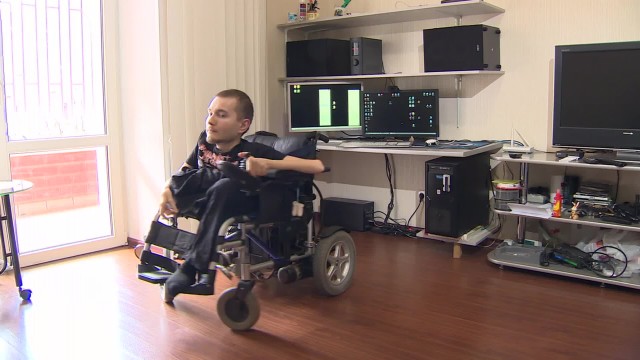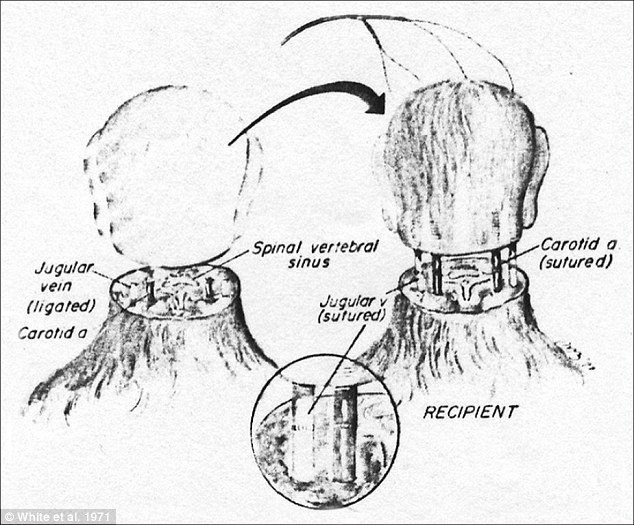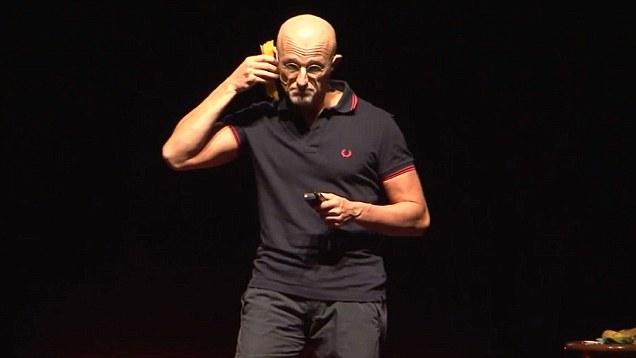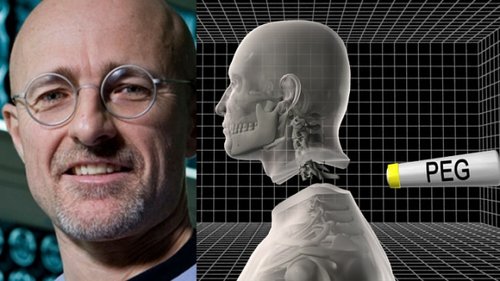Human Head Transplants, Coming Soon To A Hospital Near You...?
Critics are calling this neuroscientist "nuts" and "Dr. Frankenstein" for believing a head transplant surgery is a possible treatment for a disease.
Grab your blankies kids, this horror-movie-sounding plot is a real technique outlined in the Surgical Neurology International journal!
Meet Valery Spiridonov, a 30-year-old computer scientist who has volunteered to be the world's first ever human head transplant subject due to his fatal genetic disease
A 30-year-old computer scientist announced that he will become the subject of the first human head transplant ever performed.
Image via RuptlyA computer scientist from Russia, Valery Spiridonov, 30 announced that he will become the subject of the first human head transplant ever performed, saying he volunteers to have his head removed and installed on a donor body. He has Werdnig-Hoffmann disease, a rare and fatal genetic muscle-wasting disorder that is rapidly declining his health.
 sciencealert.com
sciencealert.com
The transplant is a brainchild of neuroscientist Sergio Canavero who wants to help people recover from severe tissue damage. The controversial project has already been published in an international surgical journal with plans to launch at a surgical conference.
Neuroscientist Sergio Canavero believes that head transplants wil be a new medical breakthrough.
Image via Daily SabahThis controversial project to perform the world's first human head transplant was resurrected from the dead, quite literally. Proposed two years ago, the idea was born while considering how to improve the lives of patients with severe muscle and nerve damage from cancer by Sergio Canavero, a neuroscientist from the Turin Advanced Neuromodulation Group in Italy.
Earlier this year, the Italian surgeon outlined the transplant technique in the Surgical Neurology International journal, and plans to launch the project at the annual conference of the American Academy of Neurological and Orthopaedic Surgeons (AANOS) in the US in June. The operation is supposed to commence by 2017.
A head transplant surgery will take up to 36 hours, 150 medical professionals, and up to 12 months for the subject to fully heal. That's if he survives the tedious procedure. This is how Dr. Canavero plans to reattach a man's head to another man's body:
The 36-hour operation involving 150 doctors and nurses begins by cooling both the body and head so the cells won’t die from oxygen deprivation. Next, the neck and spinal cord is severed while all the crucial blood vessels are hooked up to tubes.
"Just like hot water makes dry spaghetti stick together, polyethylene glycol encourages the fat in cell membranes to mesh.” say Canavero.
Image via Daily Mail"The recipient's head is then moved on to the donor body and the two ends of the spinal cord – which resemble two densely packed bundles of spaghetti – are fused together,” according to the New Scientist. To achieve this, the area has to be flushed with a chemical called polyethylene glycol and follow up with several hours of injections of the same stuff. "Just like hot water makes dry spaghetti stick together, polyethylene glycol encourages the fat in cell membranes to mesh,” states Canavero.
The final step would be to stitch up the muscles and blood supply, and to induce a three or four week coma to let the body heal itself. The damage to the spinal cord would take about 12 months to heal fully, but the subject's voice will be retained.
Critics think that Spiridonov is not as mentally prepared as he thinks he is. They say the man's fate could be "worse than death", especially if the body rejects his head. He could go insane.
There is no evidence that the connectivity of cord and brain would lead to useful sentient or motor function following head transplantation,
Image via Viral PortalWhile the volunteer is prepared for the possibility that the body will reject his head and he will die, his fate could be considerably worse than death.
"I would not wish this on anyone," said Dr Hunt Batjer, president-elect of the American Association of Neurological Surgeons. "I would not allow anyone to do it to me as there are a lot of things worse than death." The problem with fusing a head and a separate body could result in a never experienced level and quality of insanity.
Arthur Caplan, director of medical ethics at New York University’s Langone Medical Centre, who described Dr Canavero as "nuts", believes that the bodies of head transplant patients "would end up being overwhelmed with different pathways and chemistry than they are used to and they’d go crazy."
However, Spiridonov remains firm with his decision. He believes his fate does not leave him with much and risks are merely a part of developing science.
Valery Spiridonov wants to be the first person to undergo a head transplant so he can help develop this medical breakthrough.
Image via Lumi"You have to understand that I don't really have many choices. If I don't try this chance my fate will be very sad. I do understand the risks of such surgery," he said to the Daily Mail. "I don't do this because I don't have a life, but I think that science is developed by those who are ready to take risks and devote themselves to it. My decision is final and I do not plan to change my mind.”
Human head transplants may not be as far-fetched as we think. Similar surgeries have been tested on monkeys, rats, and even a human hand!
In 1970, a team led by Robert White became the first to transplant the head of one monkey onto the body of another at the Case Western Reserve University School of Medicine in Cleveland, Ohio. The animal was unable to move because the spinal cord was not connected and lived for nine days until its immune system rejected the head.
Dr. Ren Xiaoping with the 2nd Affiliated Hospital at Harbin Medical University, China has successfully completed a head transplant on a mouse in 2013. Ren was also part of the first team of doctors from around the world that conducted a successful hand transplant in the U.S. city of New Jersey in 1999.
cri.cn





